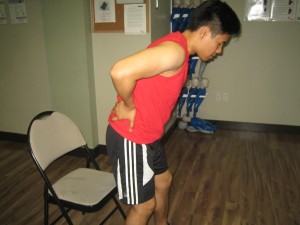A hip pointer typically occurs after an impact to the iliac crest at the upper part of the hip bone or the greater trochanter or bone-like protrusion on the exterior of the thigh bone. You can readily manage the symptoms of this injury by enrolling in a course on first aid today.
What are the symptoms?
The symptoms of a hip pointer include pain and tenderness when pressing in on the area of injury. In most cases, there is usually some obvious swelling or bruising. The individual will experience diminished range of motion at the hip point and even reduced strength in the muscles that surround the hip. The doctor will perform a full assessment of the injury in order to rule out the possibility of damage to the intra-abdominal organs.

Overview on hip pointer
A hip pointer injury typically occurs right after an impact to the iliac crest or greater trochanter. This is considered common in sports such as American football. Take note that the force of impact will result to a contusion of the iliac crest and oftentimes an avulsion fracture in which a small part of bone is pulled away by the attached muscle. Remember that this area is at high risk if it sustains a direct blow since there is limited padding and protection from the fat storage.
Bleeding typically occurs around the front and side of the hip, into the hip abductors and abdominals. Take note that the bleeding will cause swelling and will make movement of the hip painful. Right after this injury, a full assessment must be performed by the doctor in order to rule out damage to any of the intra-abdominal organs.
Treatment of a hip pointer
The treatment usually starts with adequate rest, application of ice and compression. Cold therapy can be applied 10 minutes every hour initially and reduce the frequency as needed. This will help minimize any pain, swelling and inflammation. Make sure that the ice pack used is wrapped with a clean towel or cloth before application.
The individual should visit a sports injury professional who can completely assess the injury to rule out any complications. In addition, the ideal rehabilitation program can be started which includes hip stretching and mobility exercises that is followed by hip strengthening exercises.
The doctor will carefully assess the injury for its severity and complications. An anti-inflammatory medication is usually prescribed. Once the pain is reduced, active range of motion exercises can be started. In some cases, sports massage can be started after the acute stage to help minimize the swelling, loosen up the muscle fibers and prevent the formation of scar tissues. In case there is a hematoma, aspiration might be done by the doctor that involves draining the fluid using a needle.
